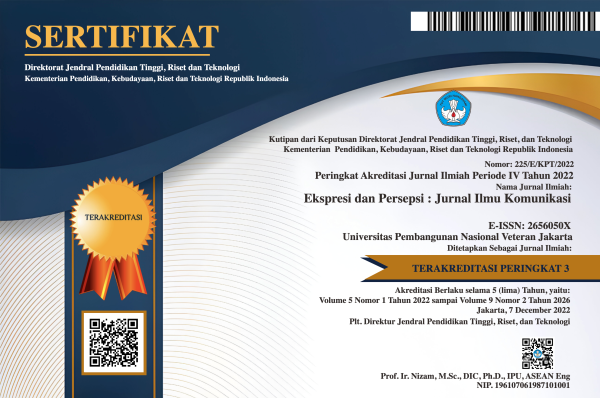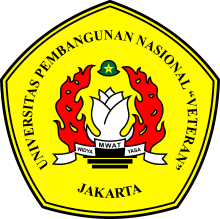REPRESENTATION OF POLICE IN KANJURUHAN STAMPEDE
MULTIMODALITY ANALYSIS OF NATIONAL POLICE’S VIDEO IN TWITTER
DOI:
https://doi.org/10.33822/jep.v6i3.6493Keywords:
Kanjuruhan, police, multimodal analysis, image, representationAbstract
This study examines the National Police's representation in a Twitter video (@DivHumasPolri) after the Kanjuruhan Stadium stampede, where over 130 lives were lost. The police faced criticism for allegedly using tear gas during the incident, in violation of FIFA regulations. The official National Police account responded with a 1:09 video showing police assisting the stampede victims. This research employs Hall's (1997) representation framework to elucidate the intended meaning of the video producers and multimodal analysis to find that the police use semiotic resources to represent themselves in the Kanjuruhan video. Police tried to identify themselves as key helpers for the Kanjuruhan victims, also victims during the incident, and partners of the supporters. National Police, as the video producer, was able to select relevant messages to maintain their public image and simultaneously communicate smoothly to the public regarding their position on the incident.
References
Baldry, A., & Thibault, P. (2006). Multimodal transcription and text analysis. Equinox.
CNN Indonesia. (2022). Kenapa FIFA Larang Gas Air Mata di Stadion? 1.
Colbran, M. P. (2020). Policing, social media and the new media landscape: can the police and the traditional media ever successfully bypass each other? Policing and Society, 30(3), 295–309. https://doi.org/10.1080/10439463.2018.1532426
Dolamore, S., Sowa, J. E., & Edwards, L. H. (2022). Depicting the Work of Police Foundations on Social Media: A Visual Communication Analysis. Journal of Public and Nonprofit Affairs, 8(2), 168–194. https://doi.org/10.20899/jpna.8.2.168-194
Ellis, J., & McGovern, A. (2016). The end of symbiosis? Australia police–media relations in the digital age. Policing and Society, 26(8), 944–962. https://doi.org/10.1080/10439463.2015.1016942
Fisher, W. R. (1984). Narration as a human communication paradigm: The case of public moral argument. Communication Monographs, 51(1), 1–22. https://doi.org/10.1080/03637758409390180
Ginting, R., Zulkarnain, I., & Kurniawati, D. (2023). Communication Relations Strategy North Sumatra Regional Police in Building Police Image in North Sumatra, Indonesia. Journal of Social Interactions and Humanities, 2(2 SE-Articles), 105–116. https://doi.org/10.55927/jsih.v2i2.5217
Hall, S. (1997). Representation: Cultural Representations and Signifying Practices. SAGE Publications.
Halliday, M. A. K., & Matthiessen, C. (2013). Halliday’s Introduction to Functional Grammar. https://doi.org/10.4324/9780203431269
Johnston, J., & Mcgovern, A. (2013). Communicating Justice: A Comparison of Courts and Police Use of Contemporary Media. In International Journal of Communication (Vol. 7). http://ijoc.org.
Jungblut, M., Kümpel, A. S., & Steer, R. (2022). Social media use of the police in crisis situations: A mixed-method study on communication practices of the German police. New Media & Society, 14614448221127900. https://doi.org/10.1177/14614448221127899
Mitchell, W. (2008). What Do Pictures Want?: The Lives and Loves of Images. Bibliovault OAI Repository, the University of Chicago Press. https://doi.org/10.2752/174967808X379506
Murray, L., & McGovern, A. (2013). Policing and media: Public relations, simulations and communications. Policing and Media: Public Relations, Simulations and Communications, 1–248. https://doi.org/10.4324/9780203095997
Nurdiansyah, ari, & Kartika, R. (2020). Penerapan media relations dalam mempertahankan reputasi kementerian pertanian republik indonesia. Ekspresi Dan Persepsi: Jurnal Ilmu Komunikasi, 3(1), 48–57. https://doi.org/10.33822/jep.v3i1
Prabowo, T. (2021). Effect of Instagram Post on Legitimacy and Reputation of Indonesian National Police. Ultimacomm: Jurnal Ilmu Komunikasi, 13(2 SE-Articles). https://doi.org/https://doi.org/10.31937/ultimacomm.v13i2.2385
Riyanto, R., Ma’ruf, U., & Kusriyah, S. K. (2020). Implementation Of Police Role In Countermeasures Of Traffic Criminal Acts Of Traffic Violations In Efforts To Establish Police Images As Community Guidelines. Jurnal Daulat Hukum, 3(2), 267. https://doi.org/10.30659/jdh.v3i2.9385
Setiamukti, M. F., & Nasvian, M. (2023). Social network analysis #usuttuntas pada media sosial twitter (data twitter 11 november 2022). Ekspresi Dan Persepsi : Jurnal Ilmu Komunikasi, 6(1), 124–137. https://doi.org/10.33822/jep.v6i1.5427
Sokowati, M., & Nurnisya, F. (2021). Produksi citra polisi dalam film : sebuah upaya sakralisasi (Analisis Genre Pemenang Police Movie Festival 2017-2019). Interaksi: Jurnal Ilmu Komunikasi, 10, 68–81. https://doi.org/10.14710/interaksi.10.1.68-81
Wahyu, R., Martianto, U., & Toni, A. (2021). Analisis semiotika gaya komunikasi milenial bambang soesatyo melalui youtube podcast. In Jurnal Ilmu Komunikasi (Vol. 4, Issue 1). http://ejournal.upnvj.ac.id/index.php/JEP/index
Walby, K., & Wilkinson, B. (2023). The visual politics of public police Instagram use in Canada. New Media and Society, 25(5), 898–920. https://doi.org/10.1177/14614448211015805
Walsh, J. P., Baker, V., & Frade, B. (2022). Policing and social media: The framing of technological use by Canadian newspapers (2005–2020). Criminology & Criminal Justice, 17488958221114254. https://doi.org/10.1177/17488958221114254
Wood, M. A., & McGovern, A. (2021). Memetic copaganda: Understanding the humorous turn in police image work. Crime, Media, Culture, 17(3), 305–326. https://doi.org/10.1177/1741659020953452
Downloads
Published
Issue
Section
License
Copyright (c) 2023 Edo Karensa

This work is licensed under a Creative Commons Attribution-NonCommercial 4.0 International License.
Kebijakan yang diajukan untuk jurnal yang menawarkan akses terbuka
Syarat yang harus dipenuhi oleh Penulis sebagai berikut:- Penulis menyimpan hak cipta dan memberikan jurnal hak penerbitan pertama naskah secara simultan dengan lisensi di bawah Creative Commons Attribution License yang mengizinkan orang lain untuk berbagi pekerjaan dengan sebuah pernyataan kepenulisan pekerjaan dan penerbitan awal di jurnal ini.
- Penulis bisa memasukkan ke dalam penyusunan kontraktual tambahan terpisah untuk distribusi non ekslusif versi kaya terbitan jurnal (contoh: mempostingnya ke repositori institusional atau menerbitkannya dalam sebuah buku), dengan pengakuan penerbitan awalnya di jurnal ini.
- Penulis diizinkan dan didorong untuk mem-posting karya mereka online (contoh: di repositori institusional atau di website mereka) sebelum dan selama proses penyerahan, karena dapat mengarahkan ke pertukaran produktif, seperti halnya sitiran yang lebih awal dan lebih hebat dari karya yang diterbitkan. (Lihat Efek Akses Terbuka).
Kebijakan yang diajukan untuk jurnal yang menawarkan akses terbuka yang tertunda
Penulis yang menerbitkan dengan jurnal ini setuju pada persyaratan berikut ini:
- Penulis menyimpan hak cipta dan memberikan jurnal hak penerbitan pertama, dengan pekerjaan [TENTUKAN PERIODE WAKTU] setelah penerbitan secara simultan dengan lisensi di bawah: Creative Commons Attribution License yang memudahkan yang lain untuk berbagi karya dengan pengakuan penerbitan awal dan kepenulisan karya di jurnal ini.
- Penulis bisa memasukkan ke dalam penyusunan kontraktual tambahan terpisah untuk distribusi non-ekslusif versi kaya terbitan jurnal (contoh: mempostingnya ke repositori institusional atau menerbitkannya dalam sebuah buku), dengan pengakuan penerbitan awalnya di jurnal ini.
- Penulis diizinkan dan didorong untuk mem-posting karya mereka online (contoh: di repositori institusional atau di website mereka) sebelum dan selama proses penyerahan, karena dapat mengarahkan ke pertukaran produktif, seperti halnya sitiran yang lebih awal dan lebih hebat dari karya yang diterbitkan. (Lihat Efek Akses Terbuka).










